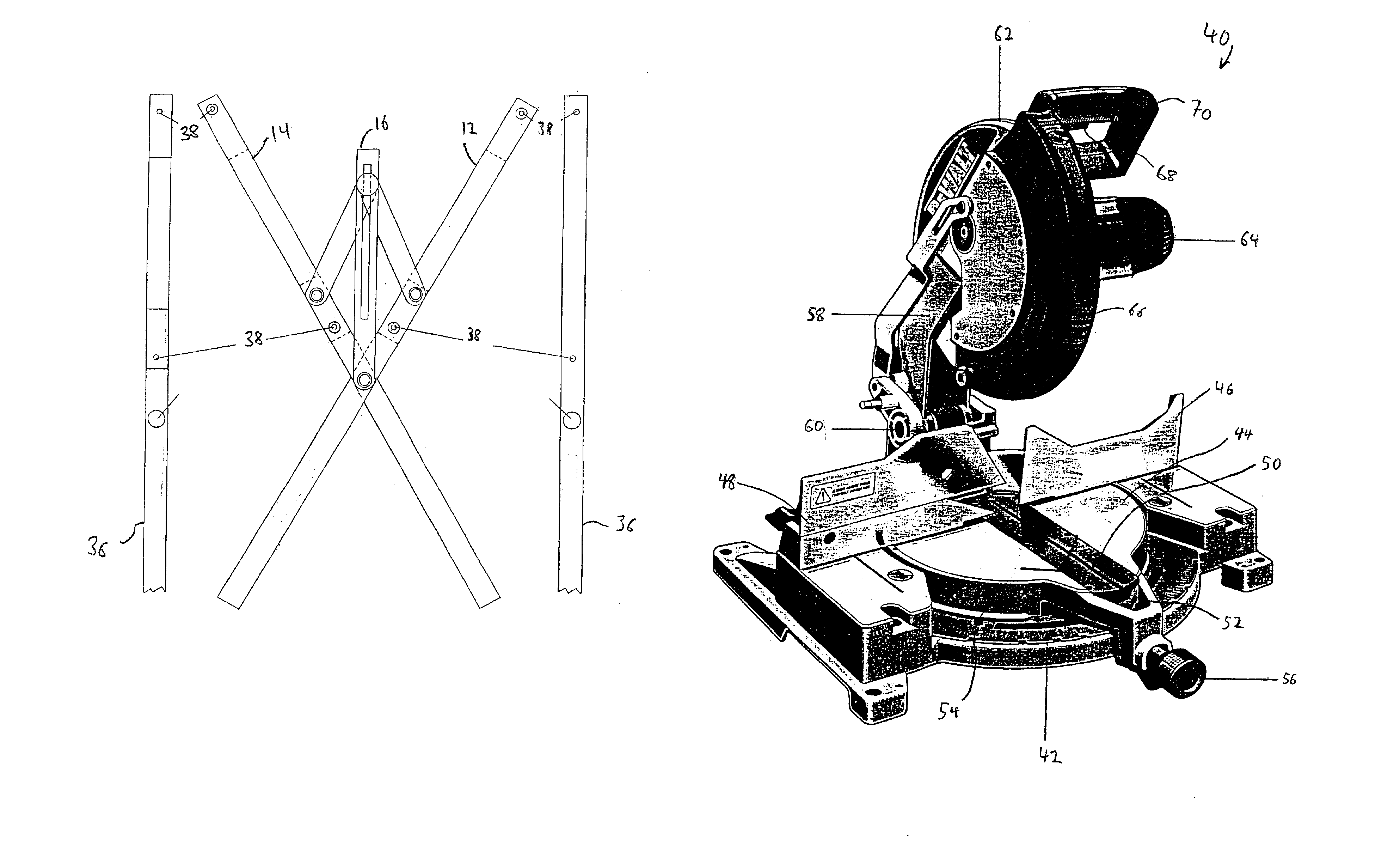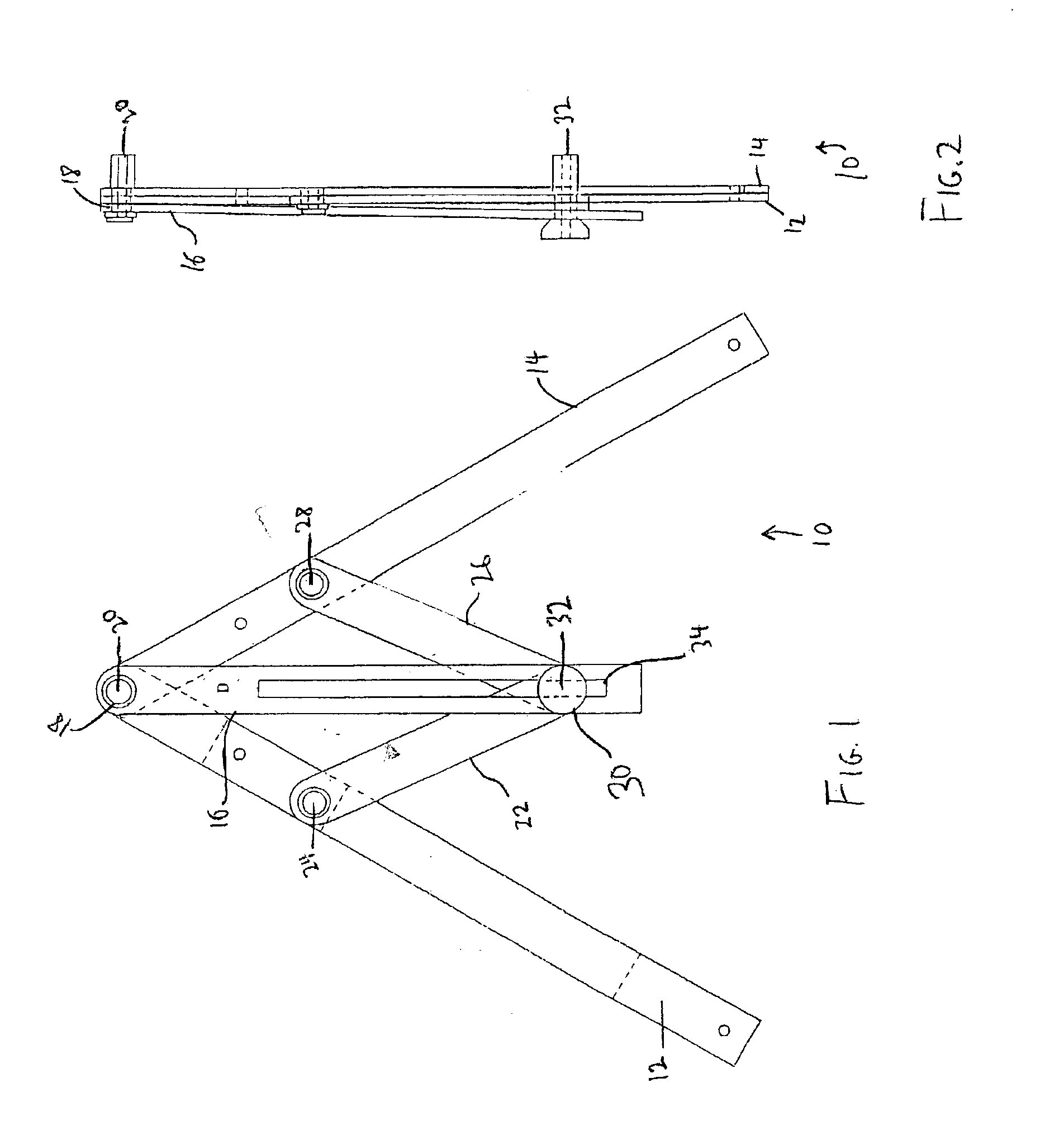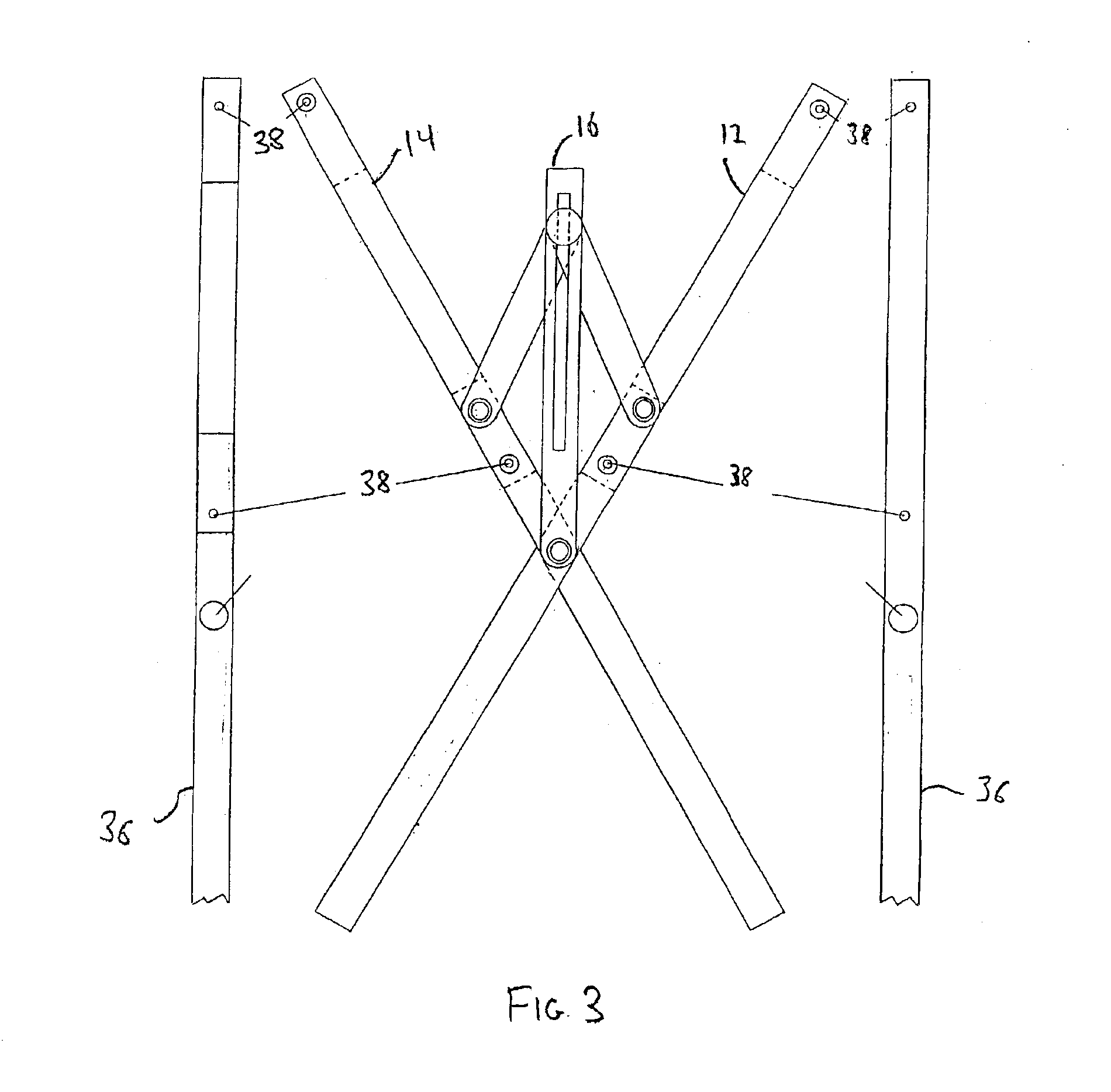System for precision miter cutting
a technology of precision miter cutting and miter saw, which is applied in the field of system for miter cutting, can solve the problems of inability to use the demarco angle-modeling device on the miter saw, increased processing difficulty, and inability to accurately model the angle of the miter saw, and achieve the effect of facilitating the cutting of workpieces
- Summary
- Abstract
- Description
- Claims
- Application Information
AI Technical Summary
Benefits of technology
Problems solved by technology
Method used
Image
Examples
Embodiment Construction
The advantages of a system for perfecting miter cuts constructed or retrofitted on a miter saw in accordance with the present invention will become more readily apparent to those having ordinary skill in the art from the following detailed description of certain preferred embodiments taken in conjunction with the drawings which set forth representative embodiments thereof. Unless otherwise apparent, or stated, directional references, such as “right,”“left,”“upper,”“below,”“horizontal”“vertical,”“upward” and “downward”, are intended to be relative to the orientation of a particular embodiment of the invention as shown in the first numbered view of that embodiment. In addition, a given reference numeral indicates the same or similar structure when it appears in different figures and like reference numerals identify similar structural elements and / or features of the subject invention.
Referring now to FIG. 1, in which there is illustrated a preferred embodiment of a miter angle modeling...
PUM
| Property | Measurement | Unit |
|---|---|---|
| convergence angle | aaaaa | aaaaa |
| convergence angle | aaaaa | aaaaa |
| combination angle | aaaaa | aaaaa |
Abstract
Description
Claims
Application Information
 Login to View More
Login to View More - R&D
- Intellectual Property
- Life Sciences
- Materials
- Tech Scout
- Unparalleled Data Quality
- Higher Quality Content
- 60% Fewer Hallucinations
Browse by: Latest US Patents, China's latest patents, Technical Efficacy Thesaurus, Application Domain, Technology Topic, Popular Technical Reports.
© 2025 PatSnap. All rights reserved.Legal|Privacy policy|Modern Slavery Act Transparency Statement|Sitemap|About US| Contact US: help@patsnap.com



